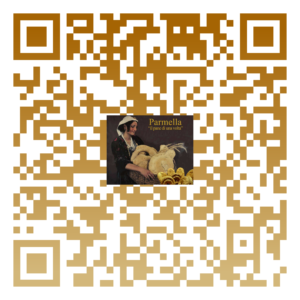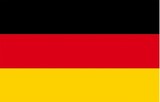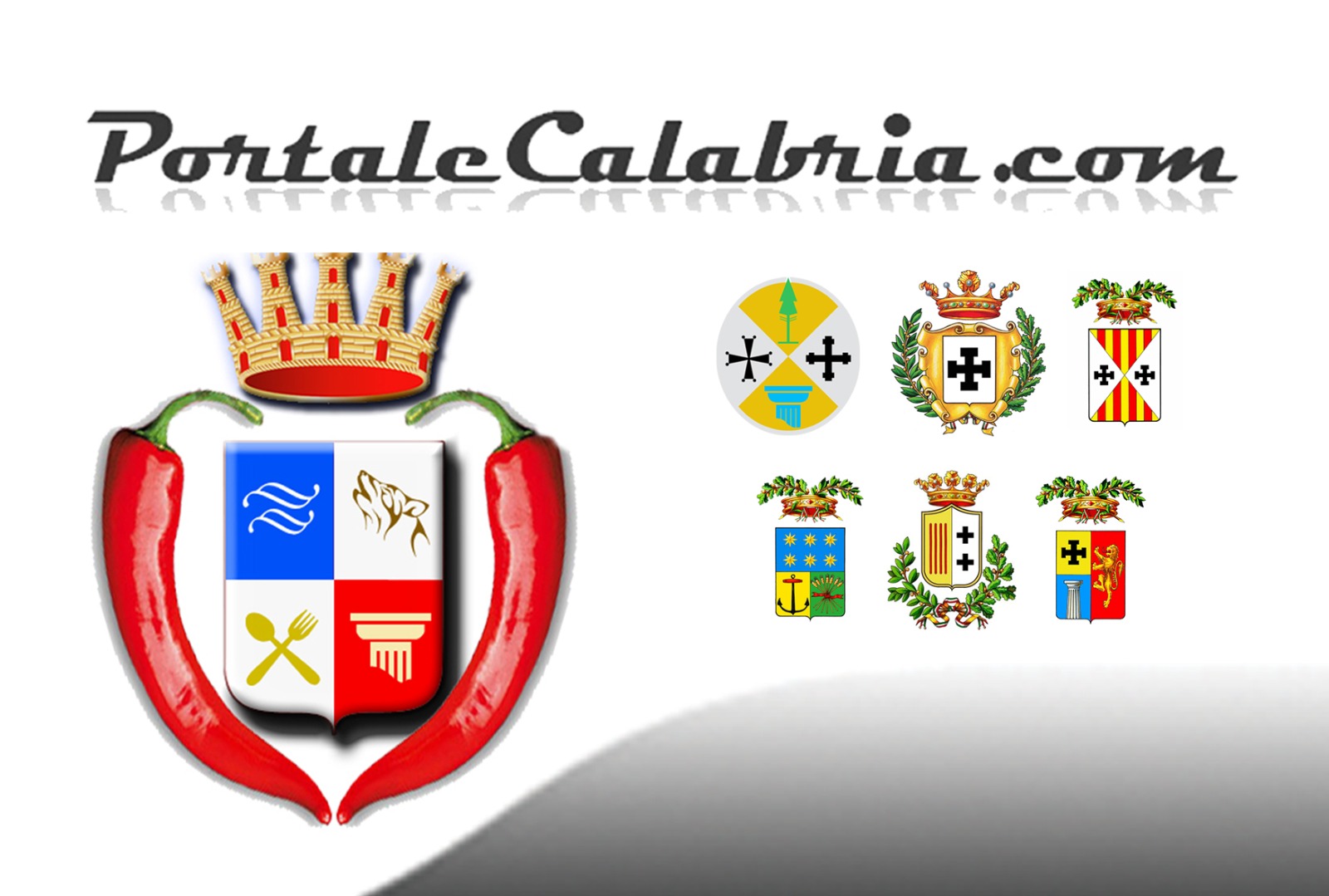
Panificio Parmella
In dettaglio

 In una prima fase, nel forno “Parmella” la produzione si basa sui prodotti artigianali già realizzati nel forno dei Ceretti: pane, cullure, ciabatte e pitte classiche (con sarde, con strutto, con “sardella”) ma ben presto inizia un nuovo periodo lavorativo, attento alle nuove richieste del mercato ed ai gusti alimentari, sempre più diversificati. La produzione si allarga a tutta una nuova serie di prodotti, ma tutti rigorosamente figli della più antica tradizione locale, tutti preparati con lievito madre e tutti cotti a forno a legno. Così dai primi prodotti base, dal classico casereccio di grano tenero si passa al pane di segale (“Jarmanu” -un tipico grano di montagna), integrale, ai 5 cereali (tenero, duro, segale, orzo e avena), tipo 2 (tenero ma meno raffinato), a doppia lievitazione (con ben tre lievitazioni prima della cottura e cottura a fuoco molto lento e con la caratteristica di rimane sempre molto chiaro). Tipica, poi, è la produzione della “pitta minata”, un prodotto esclusivo sangiovannese fatta con resti di pasta rimescolati con farina e acqua e con poca lievitatazione.
In una prima fase, nel forno “Parmella” la produzione si basa sui prodotti artigianali già realizzati nel forno dei Ceretti: pane, cullure, ciabatte e pitte classiche (con sarde, con strutto, con “sardella”) ma ben presto inizia un nuovo periodo lavorativo, attento alle nuove richieste del mercato ed ai gusti alimentari, sempre più diversificati. La produzione si allarga a tutta una nuova serie di prodotti, ma tutti rigorosamente figli della più antica tradizione locale, tutti preparati con lievito madre e tutti cotti a forno a legno. Così dai primi prodotti base, dal classico casereccio di grano tenero si passa al pane di segale (“Jarmanu” -un tipico grano di montagna), integrale, ai 5 cereali (tenero, duro, segale, orzo e avena), tipo 2 (tenero ma meno raffinato), a doppia lievitazione (con ben tre lievitazioni prima della cottura e cottura a fuoco molto lento e con la caratteristica di rimane sempre molto chiaro). Tipica, poi, è la produzione della “pitta minata”, un prodotto esclusivo sangiovannese fatta con resti di pasta rimescolati con farina e acqua e con poca lievitatazione.
Ma l’innovazione prosegue ancora e, dal 2002, è viene avviata anche l’attività dolciaria che ottiene un notevole riscontro con la “Pitta ‘mpigliata”, i mostaccioli e i “turdilli”, dolci tipicamente natalizi ma che vengono richiesti e prodotti, ormai, durante tutto l’arco dell’anno, tutti preparati secondo l’antica tradizione di famiglia della sig.ra Rosa Iaquinta. A questi, grazie anche alla ventata di giovinezza portata dalla presenza dei tre giovani figli della coppia, sono seguiti, negli ultimi anni, altri dolci tradizionali tra cui i richiestissimi “ bocchinotti”.
Il forno “Parmella –il pane di una volta”, di Rosa Iaquinta compare, per la tipicità di alcuni suoi prodotti, sull’ Atlante dei prodotti tipici nei Parchi – edizione a cura del Parco Nazionale della Sila, su “L’Italia del pane”. Guida alla scoperta e alla conoscenza …. Slow Food Editore 2008 e su “Festival dei giovani talenti. 200 storie di giovani che fanno migliore l’Italia” – Novembre 2010- Roma EUR.
 In a first phase, in the “Parmella” oven the production is based on artisanal products already made in the Ceretti oven: bread, cullure, ciabatta and classic pitte (with sardines, with lard, with “sardella”) but soon a new working period, attentive to new market demands and increasingly diversified food tastes. The production expands to a whole new series of products, but all strictly children of the most ancient local tradition, all prepared with mother yeast and all cooked in a wood oven. So from the first basic products, from the classic homemade soft wheat to rye bread (“Jarmanu” – a typical mountain wheat), wholemeal, to 5 cereals (soft, hard, rye, barley and oats), type 2 ( tender but less refined), double leavening (with three leavenings before cooking and cooking over very low heat and with the characteristic of always remaining very clear). Typical, then, is the production of “pitta minata”, an exclusive Sangiovannese product made with remains of dough mixed with flour and water and with little leavening.
In a first phase, in the “Parmella” oven the production is based on artisanal products already made in the Ceretti oven: bread, cullure, ciabatta and classic pitte (with sardines, with lard, with “sardella”) but soon a new working period, attentive to new market demands and increasingly diversified food tastes. The production expands to a whole new series of products, but all strictly children of the most ancient local tradition, all prepared with mother yeast and all cooked in a wood oven. So from the first basic products, from the classic homemade soft wheat to rye bread (“Jarmanu” – a typical mountain wheat), wholemeal, to 5 cereals (soft, hard, rye, barley and oats), type 2 ( tender but less refined), double leavening (with three leavenings before cooking and cooking over very low heat and with the characteristic of always remaining very clear). Typical, then, is the production of “pitta minata”, an exclusive Sangiovannese product made with remains of dough mixed with flour and water and with little leavening.
But the innovation continues and, since 2002, the confectionery business has also been launched which obtains a notable response with the “Pitta ‘mpigliata”, the mostaccioli and the “turdilli”, typically Christmas sweets but which are now requested and produced. , throughout the year, all prepared according to the ancient family tradition of Mrs. Rosa Iaquinta. These, thanks also to the breath of youth brought by the presence of the couple’s three young children, have been followed in recent years by other traditional sweets including the highly sought after “bocchinotti”.
Rosa Iaquinta’s oven “Parmella – the bread of the past” appears, for the typicality of some of its products, in the Atlas of typical products in the Parks – edition edited by the Sila National Park, on “L’Italia del pane “. Guide to discovery and knowledge…. Slow Food Editore 2008 and on “Festival of young talents. 200 stories of young people who make Italy better “- November 2010 – Rome EUR.
 In einer ersten Phase, im „Parmella“-Ofen, basiert die Produktion auf den handwerklichen Produkten, die bereits im Ceretti-Ofen hergestellt wurden: Brot, Cullure, Ciabatta und klassisches Pitta (mit Sardinen, mit Schmalz, mit „Sardella“), aber bald ein neues Arbeitszeit, aufmerksam auf neue Marktanforderungen und immer vielfältigere Lebensmittelgeschmäcker. Die Produktion wird um eine ganz neue Reihe von Produkten erweitert, die jedoch ausschließlich Produkte der ältesten lokalen Tradition sind, alle mit Sauerteig zubereitet und im Holzofen gegart. Also von den ersten Grundprodukten, vom klassischen hausgemachten Weichweizenbrot, über Roggenbrot („Jarmanu“ – ein typischer Bergweizen), Vollkorn, bis hin zu den 5 Getreidesorten (Weich, Hart, Roggen, Gerste und Hafer), Typ 2 (zart, aber weniger raffiniert), doppelt gesäuert (mit drei Gärungen vor dem Kochen und Kochen bei sehr langsamer Hitze und mit der Eigenschaft, immer sehr leicht zu bleiben). Typisch ist daher die Herstellung von „Pitta Minata“, einem exklusiven Sangiovannese-Produkt, das aus mit Mehl und Wasser vermischten Teigresten und mit wenig Sauerteig hergestellt wird.
In einer ersten Phase, im „Parmella“-Ofen, basiert die Produktion auf den handwerklichen Produkten, die bereits im Ceretti-Ofen hergestellt wurden: Brot, Cullure, Ciabatta und klassisches Pitta (mit Sardinen, mit Schmalz, mit „Sardella“), aber bald ein neues Arbeitszeit, aufmerksam auf neue Marktanforderungen und immer vielfältigere Lebensmittelgeschmäcker. Die Produktion wird um eine ganz neue Reihe von Produkten erweitert, die jedoch ausschließlich Produkte der ältesten lokalen Tradition sind, alle mit Sauerteig zubereitet und im Holzofen gegart. Also von den ersten Grundprodukten, vom klassischen hausgemachten Weichweizenbrot, über Roggenbrot („Jarmanu“ – ein typischer Bergweizen), Vollkorn, bis hin zu den 5 Getreidesorten (Weich, Hart, Roggen, Gerste und Hafer), Typ 2 (zart, aber weniger raffiniert), doppelt gesäuert (mit drei Gärungen vor dem Kochen und Kochen bei sehr langsamer Hitze und mit der Eigenschaft, immer sehr leicht zu bleiben). Typisch ist daher die Herstellung von „Pitta Minata“, einem exklusiven Sangiovannese-Produkt, das aus mit Mehl und Wasser vermischten Teigresten und mit wenig Sauerteig hergestellt wird.
Aber die Innovation geht weiter und seit 2002 wird auch die Süßwarentätigkeit aufgenommen, die mit den „Pitta ‘mpigliata“, den Mostaccioli und den „Turdilli“, typischen Weihnachtssüßigkeiten, die heute aber überall nachgefragt und hergestellt werden, bemerkenswerte Erfolge erzielt hat Jahr, alles nach der alten Familientradition von Frau Rosa Iaquinta zubereitet. Diesen folgten, auch dank der Jugendlichkeit, die die Anwesenheit der drei kleinen Kinder des Paares mit sich brachte, in den letzten Jahren weitere traditionelle Desserts, darunter die sehr begehrten „Bocchinotti“.
Die Bäckerei „Parmella – das Brot der Vergangenheit“ von Rosa Iaquinta erscheint aufgrund der Typizität einiger ihrer Produkte im Atlas der typischen Produkte der Parks – Ausgabe des Sila-Nationalparks, in „L’ Italia del pane“. Leitfaden für Entdeckung und Wissen…. Slow Food Editore 2008 und zum Thema „Festival der jungen Talente. 200 Geschichten von jungen Menschen, die Italien besser machen“ – November 2010 – Rom EUR.





















